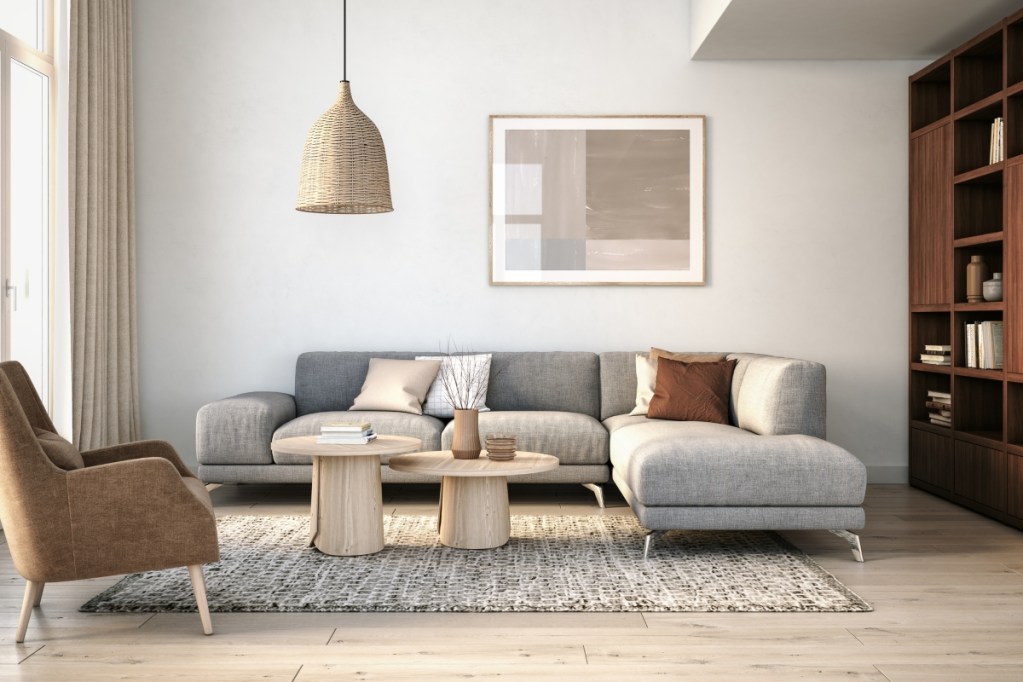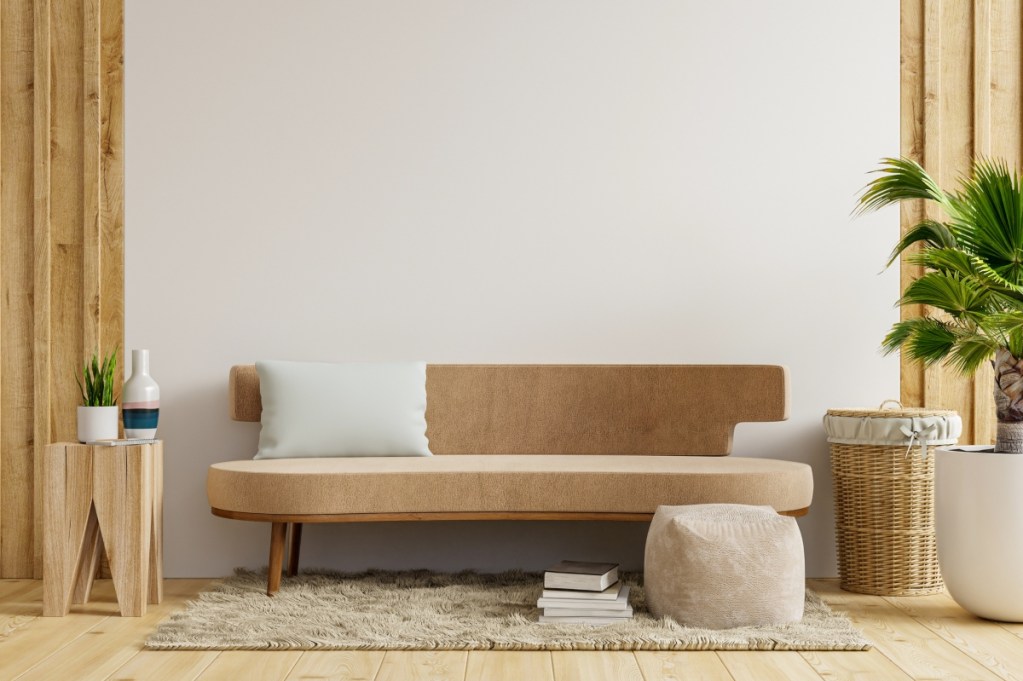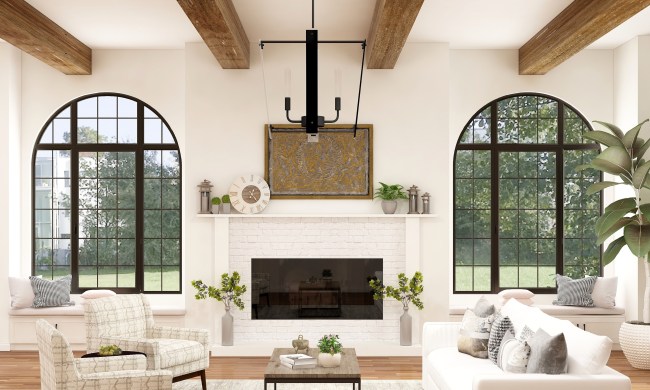Minimalism has gained a lot of traction in interior design over the past few years. With its stylish neutrals, unique approach to decor, and welcome push for simplicity, minimalism has become one of the most popular home decor styles.
Sadly, this beautiful style also comes with a lot of misconceptions as it slowly makes its way into home magazines and inspirational posts on the web. Here, we’re giving you expert advice on what minimalism truly is and what people often get wrong when it comes to minimalist decor.

What are some characteristics of minimalism?
One question we see a lot is, “Why is minimalist interior design so popular?” In short, this style allows people to decorate with less and focus on intentionality. Homeowners who adore this design style have found that the simplicity they gained from a minimal home design is unique. Unlike many design styles that require expensive pieces, plentiful decor, or a variety of knickknacks and patterns to achieve a solid look, minimalism turns traditional home design on its head.
Minimalist design uses a neutral palette that is easy to style and that encourages users to decorate with fewer objects and materials. The focus is on using only what you need to achieve a peaceful design. Many people find this to be a breath of fresh air, as it makes it easier to keep your home tidy while also creating a blissful space fit for relaxation.

What are some common misconceptions about minimalist design?
Unfortunately, minimalism has garnered several misconceptions over the past few years, which has deterred some interested homeowners from using the style. So, below are six things interior designers say everyone gets wrong about minimalism.
Thinking that minimalism is cold and boring
Perhaps the most popular belief people have about minimalism is that it is cold and boring. This likely stems from the facade of white rooms, empty spaces, and neutral colors that can sometimes appear flat in a design. However, Anna Franklin, an interior designer and the founder of Stone House Collective, argued that “when done correctly, minimalism can make a space feel beautiful, light, and bright.” The use of light neutrals and white in a room can make the design feel airy and rejuvenating.
The architect and designer Amanda Gunawan, founding partner of OWIU Studio in Los Angeles, added, “Many people assume minimal means white; however, it’s important to create warmth and depth with color.”
The secret to preventing a cold or flat look in a minimally styled space is to use warm neutrals and texture to add dimension and depth to the design. Brown couches and chairs, greige curtains, and wicker baskets are a few items that can add warmth and depth to your minimalist design.
Believing you have to own nothing to achieve the aesthetic
Another misconception is that you can’t own a lot of items if you want to have a minimalist aesthetic in your home. However, Gunawan said, “Minimalism isn’t simply about getting rid of stuff or having very few possessions, but rather viewing the potential evolution and growth of a given space.”
Getting creative with storage solutions, using your essentials as decor, or styling negative space to your advantage can make minimalism a functional home decor style even for people who have a lot of stuff. Additionally, multipurpose furniture and built-in storage give homeowners the opportunity to find unique and functional solutions to item storage while also maintaining a minimalist look in their home.
Assuming texture has no place in minimalist design
Anna Franklin advises homeowners “to create depth in a minimalist space [by using] different textures and fabrics where possible.” Texture is a vital element in minimalist design because it prevents the space from feeling flat. Unfortunately, a common issue in minimal room designs is that monochromatic neutrals with similar textures can leave a space feeling dull and boring. This is likely where the first misconception we mentioned above stems from.
Thankfully, you can easily resolve this interior design problem by using a variety of textures in your space. Wool, cotton, and tweed textiles can be great soft additions to your space. Additionally, metal and glass can be fantastic solid materials for tables, chairs, and decor.
Thinking there won’t be any storage space
Some people avoid minimalist home design because they think there won’t be any place to store their items. Similar to the misconception that you can’t own many items if you invest in this design style, people assume you also won’t have space for storage. Gunawan corrects this misconception, saying that people “don’t realize storage space isn’t just a technical solution but rather an opportunity to enhance the overall design.” Multipurpose furniture, built-in bookshelves, furniture with built-in storage, and essentials that are placed thoughtfully on display can actually enhance your design.
Assuming minimalism is just a style
Minimalism has revolutionized much of the design world since its origins. And one of the most noticeable ways it has done so is by reshaping how we view style. Gabija Antanaitytė, an interior designer at Planner 5D, provides insight on this transformative ideology: “Minimalism is not only an interior style; it is more a lifestyle.”
You don’t have to love every part of minimalism
Minimalism is more than a stylistic choice. It is also a lifestyle. But just because minimalism encourages people to cut the clutter and live more intentionally, not every aspect of minimalism has to be of value to you to partake in the movement. For example, you may love the idea of owning fewer duplicates or being more intentional with the home decor and kitchen appliances that you purchase. But, you don’t favor the “clean white” aesthetic or the stereotypical minimalist furniture. That’s okay!
You can paint your walls vivid colors, purchase eclectic vintage furniture, or adorn your bookshelf with tons of knickknacks and sentimental pieces while still being a minimalist. Minimalism doesn’t ask us to turn our homes into empty boxes for the sake of simplicity. Rather, the style and movement encourage us to be intentional about what we include in our spaces. So, decorate in a way that inspires joy and comfort. You can still be a minimalist, especially if you’re decorating with intention.
Because of this, minimalism is deeply rooted in intentionality and comfort. To achieve the perfect minimalist look, try incorporating items that hold great meaning to you into your design. Antanaitytė said, “If the design is too clean, with only a few matching accessories, it can look blank and emotionless. That’s why it’s important to add a few personal touches to the interior.”
While misconceptions about minimalism have taken root in the minds of many people, it’s important to understand that while they may sometimes be true, they all have simple solutions. If you want to include minimalism in your home, try to focus on warm neutrals and white, and put effort into choosing a variety of textures to help enhance the space. Also, don’t forget that minimalism is also a lifestyle that you can participate in if you’re looking for more intentionality and simplicity.




